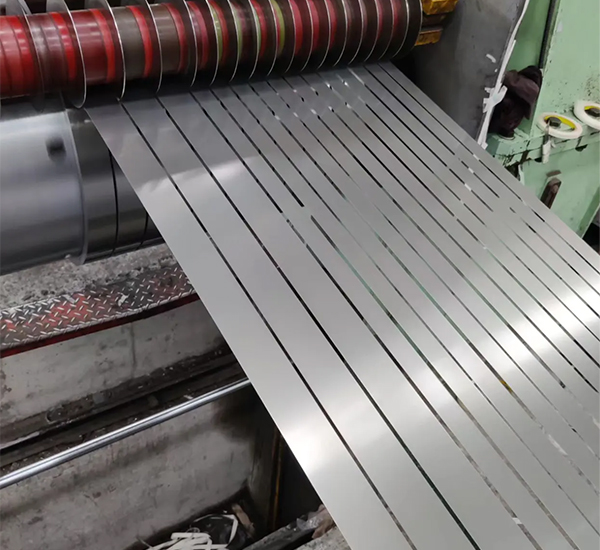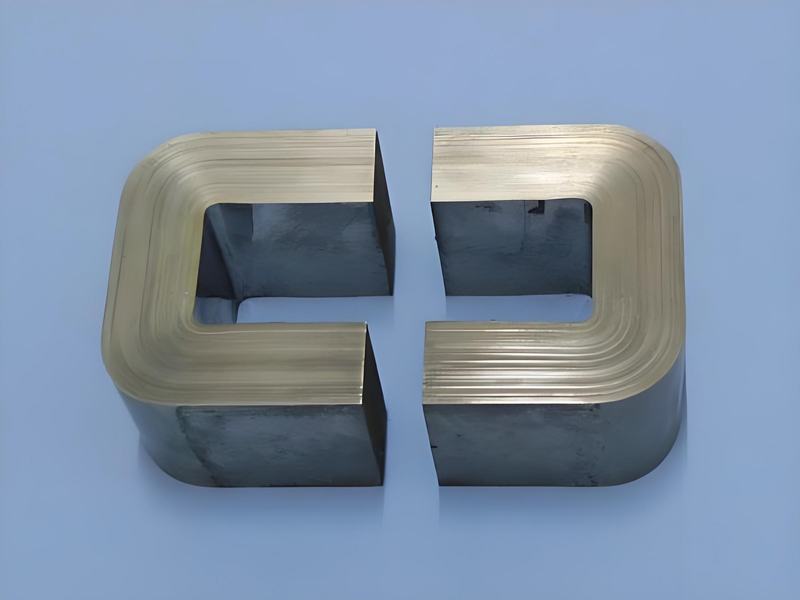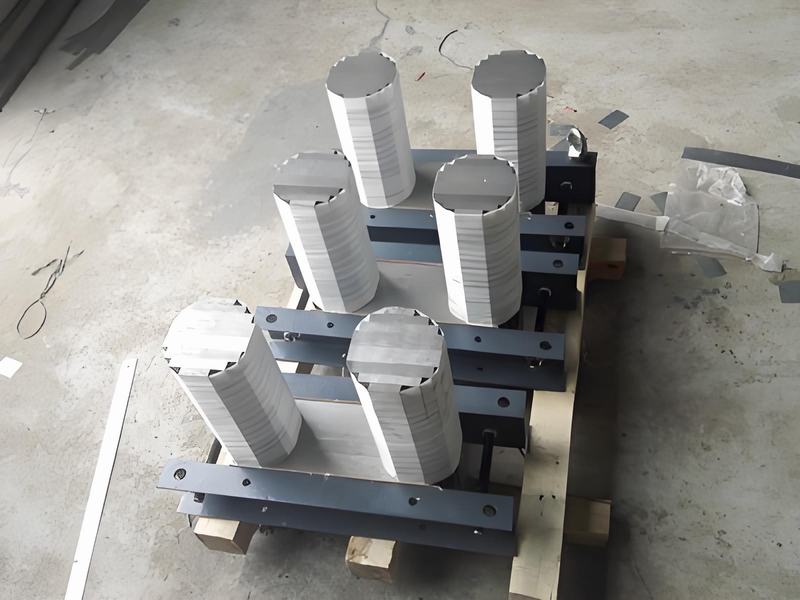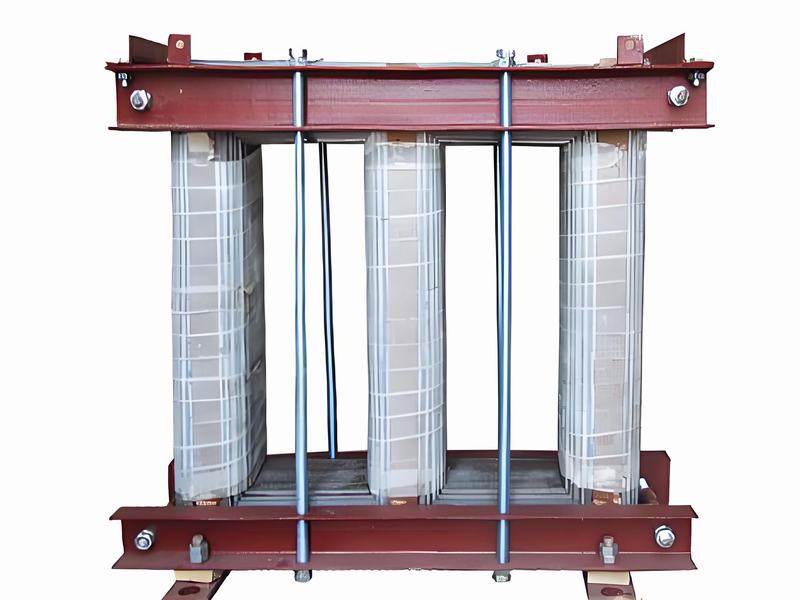
Verarbeitung von Transformatorkernen
Transformer core processing is a more complex process, the following are its main processing steps:

Raw material preparation
Material selection: usually choose silicon steel sheet as the transformer core material, because it has high permeability, low hysteresis loss and low eddy current loss and other advantages. According to the performance requirements of the transformer, select the appropriate grade and specification of silicon steel sheet.
Quality inspection: Strict quality inspection is carried out on the purchased silicon steel sheets to check whether there are defects, corrosion, deformation and other problems to ensure that the quality of raw materials meets the production requirements.
Cleaning and pretreatment: Remove the dirt, oil and impurities on the surface of silicon steel sheet to ensure the quality of subsequent processing. Chemical cleaning, ultrasonic cleaning and other methods can be used, and the cleaned silicon steel sheet is dried.
Iron chip manufacturing
Shear processing
Longitudinal shear: Use the longitudinal shear equipment to cut the silicon steel coil material longitudinally according to the required width, and get the silicon steel strip with the appropriate width.
Transverse shear: The silicon steel strip after longitudinal shear is cut transversely according to the length required by the design, and silicon steel chips with specific dimensions are obtained. CNC transverse shear can be used to improve the shearing accuracy and efficiency.
Stamping: According to the shape requirements of the transformer core, use the stamping mold to stamp the silicon steel sheet to form various shapes of iron chips, such as E-type, U-type, T-type and so on.
Surface treatment
Insulation treatment: In order to prevent the short circuit between the silicon steel sheet, it is necessary to insulate it. Common methods include coating insulating paint, pasting insulating paper and so on. Insulation treatment should ensure that the insulation layer is uniform, dense, and has good insulation properties.
Coating treatment: In addition to insulating coatings, other protective coatings, such as corrosion-resistant coatings, antioxidant coatings, etc., can be applied to the surface of the silicon steel sheet to improve the service life and performance of the silicon steel sheet.
Core stacking and fastening
Stacking method
Stacking method: Staggered stacking of silicon steel sheets, so that the seams of neighboring silicon steel sheets are staggered, in order to reduce the magnetoresistance and eddy current loss, to form the desired shape of the core.
Winding method: the silicon steel sheet is wound into a cylindrical or other shapes of the core, this way is suitable for some small transformers or special requirements of the transformer.
Flat laying method: the silicon steel sheet is laid flat on the base plate to form a flat iron core, commonly used in some special structure of the transformer.
Fastening method
Bolt fastening: the use of bolts to the core parts fastened together, this method is simple and reliable, easy to disassemble and maintenance, but need to pay attention to the tightening torque of the bolt, to avoid over-tightening or over-loosening affect the quality of the core.
Pressure plate fastening: the core will be fixed in the transformer box through the pressure plate pressure, the pressure plate can be used steel plate, insulation board and other materials, pressure plate fastening can ensure the flatness and stability of the core.
Welding fastening: the core parts are connected together by welding, welding fastening can improve the integrity and mechanical strength of the core, but the welding process needs to pay attention to control the welding temperature and deformation.
Iron core processing and treatment
Dimensional accuracy control: use high-precision processing equipment and measuring tools to accurately control and measure the dimensions of the iron core to ensure that the dimensions of each part of the iron core meet the design requirements, to ensure the accuracy of the iron core assembly.
Gap control: control the gap between the iron chips to avoid too large or too small a gap. Too large a gap may lead to an increase in magnetic resistance, affecting the performance of the transformer; too small a gap may lead to overheating of the iron core.
Pressure control: in the fastening process, to control the pressure is moderate, to avoid too large or too small impact on the quality of the iron core. Too much pressure may lead to silicon steel sheet deformation or damage, too small pressure may make the core loose.
Trimming: trimming the surface of the core, removing burrs, welding slag, flying edges and other impurities, so that the surface of the core is smooth and even, to improve the appearance of the core quality and electrical performance.
Finished product testing and packaging
Inspection items
Appearance test: Check whether the appearance of the iron core is smooth, no burr, no rust, no deformation, etc., and whether the insulating coating is even and no shedding.
Dimension test: Measure the dimensions of the iron core, such as thickness, width, length, diagonal, etc., by using measuring tools to ensure that the dimensions are in accordance with the design requirements.
Magnetic performance testing: assess whether its electromagnetic performance meets the performance requirements of the transformer by testing the magnetic induction strength, permeability, hysteresis line and other parameters of the iron core.
Air gap test: check whether the air gap between the iron core stacks is even, uneven air gap may lead to localized overheating or unstable performance of the transformer.
Packaging: according to the size of the product and transportation requirements, using appropriate packaging methods, such as overall packaging, packaging in pieces, etc.. Packaging materials should be selected moisture-proof, rust-proof, pressure-resistant materials, such as wooden boxes, cartons, plastic film, etc., in order to protect the iron core in the transportation and storage process is not damaged!



